Build Rome
-
Some interesting links. It's a magazine, the Virtual Archaeology Review. Most of the texts are in spanish (sorry Gaieus), but some of them are in english (and italian, too).
About the Roman Forum:
-
http://forums.sketchucation.com/viewtopic.php?f=81&t=8057&p=302754#p302754
I've updated the roof of the frons scenae in my model. If the international team of archeologists can give me their opinión

 I'll be pleased.
I'll be pleased.Sorry for this "spam".
-
Well, I've been off for awhile. I have another fixation, on the war of Paraguay (1864/1870). I had been looking for the final report of the italian consul, stabbed to death as he was writing it in march 1870. It wasn't in the archives of the Ministry, and I had lost hopes, and then I managed to get in touch with the family, and got it, bloodstained fingerprints and all. I am still transcribing it, not an easy job.
Well, back to ancient Rome. I received some sensible criticisms about the lakefront of Nero's atrium. 1) my solution interfered with the lake view from the Atrium; 2) you had to have an access to the lake from the Atrium without having to go down to the covered road used by commoners; 3)the lakefront was too important to just think of it as a boatshed.
So I tried this solution. The building on the lakefront is quite small and low, sort of a super gazebo, but I think it fits in the situation, and if it was any higher it would cut the view.
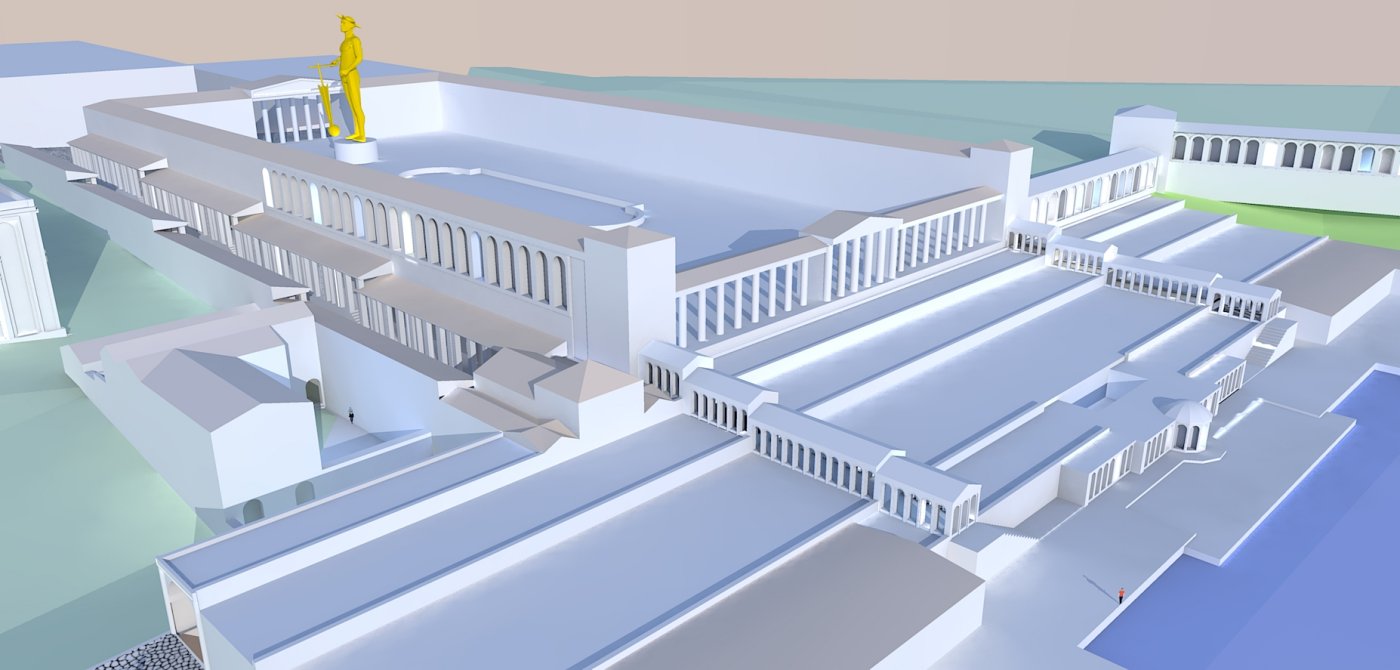
-
hepf, I don't want to interfere your work, the following image is 100% yours. I was enjoying this web (in spanish) http://trazosybosquejos.blogspot.com/ and suddenly the idea come to my mind.
I have used one of your photos, and I have applied the software FotoSKetcher to it:
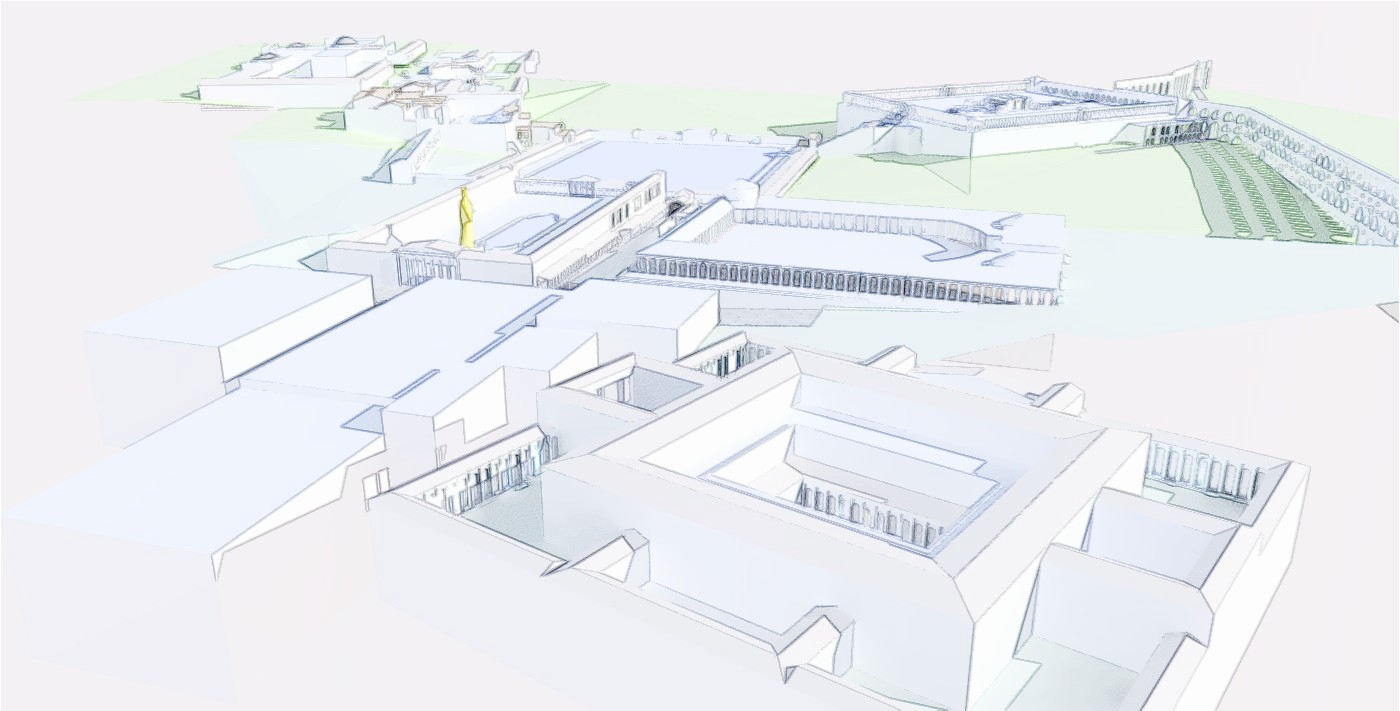
I hope you like the result. The render shows that the model is unfinished and schematic, but this way it looks like a hand made drawing and I believe that the result is better.
-
Thanks, Pichuneke. I'll certainly use that, it looks great.
I am working at the situation of the valley in the moment before the fire of 64 AD. It's not easy, I am collecting existing data, which is mainly floor plans, and putting it toghether. We know the area was very crowded, the streets were narrow, and we have some data about the overall scheme, but we also know that the buildings went up for 7 or 8 floors, mainly wooden over the lower 2 or 3 in masonry. But the rest is quite fuzzy. The area of Venus & Rome was at least partly occupied by Nero's Domus Transitoria, but what it looked like is mainly guesswork ... Well, I'll give it a try ...
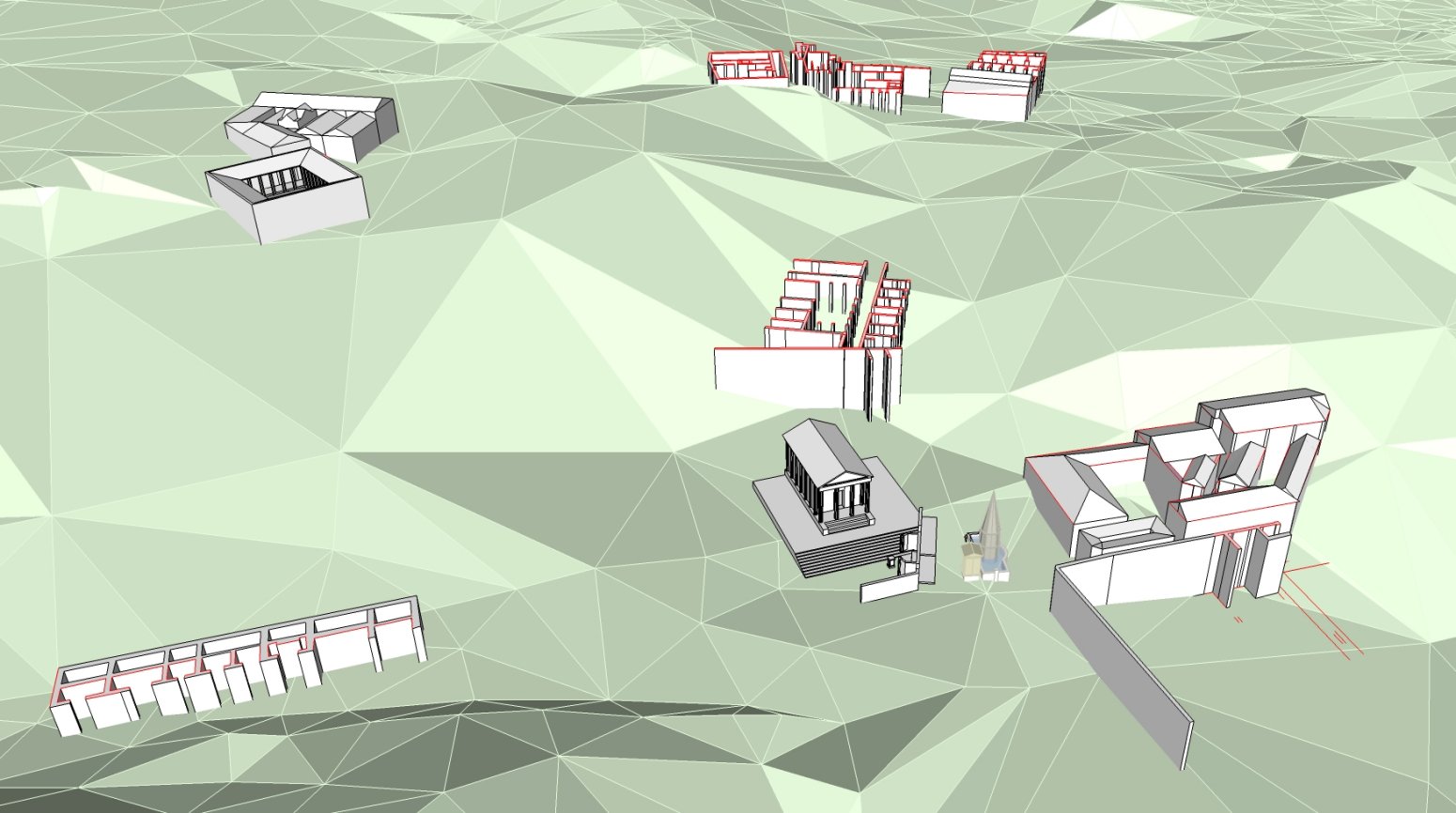
-
I'm sure you already know this Marco, but have you seen the pictures for the colosseum exhibition on Nero?
It includes the recent findings in the Palatine. What do you think?

-
@elysium said:
I'm sure you already know this Marco, but have you seen the pictures for the colosseum exhibition on Nero?
It includes the recent findings in the Palatine. What do you think?I saw that photo this morning and I thought the same as Elysium

-
The two authors, Borghini and Carlani, are very bright, but much better at interiors than in overall views. I gave them my work to think over, but they were hard pressed for a deadline (the show opened yesterday, april 11th) and they only partly used it. There are several things I don't like, mainly the arrangements on the Vigna Barberini and the cenatio rotunda. In Nero's time the Claudianum was a nimpheum, and the temple of Claudius was reintegrated later by the flavians, and so on. As a matter of fact in the final version they incorporated some more of my suggestions for the claudianum, the acqueducts, and for the connections between the lake and the termae of Titus and the Claudianum, that are not shown in this shot. All in all they are great guys, and doing a fine work, even if in evolution. The video they made for the baths of Liviae is impressive.
As for my work, here goes the temple of Elagabalus. I am intrigued by the Torre Cartularia, maybe it was an access ramp with a bridge connection between the Atrium and the Vigna Barberini, who knows. I'll give it a try to see how it could look like ...
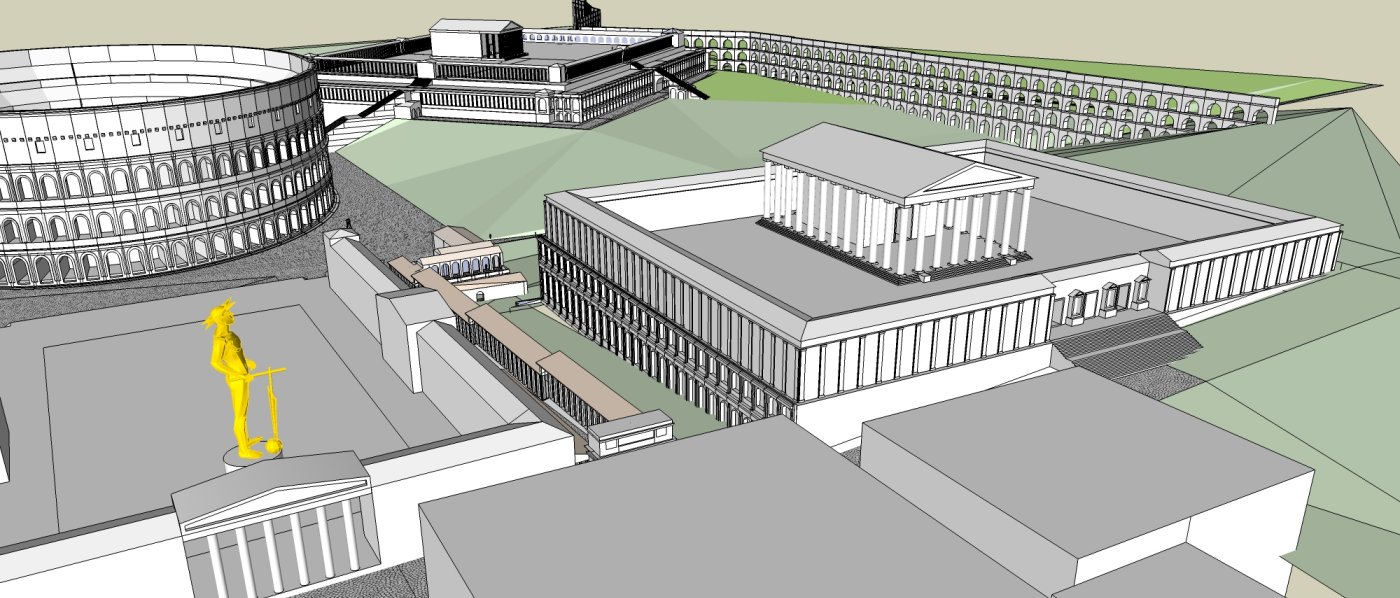
-
Does anyone have a model of the terrain of ancient rome, at least within the Servian walls?
-
I think you will enjoy this:

Roma - Mostra, Nero: Sulle tracce dell'imperatore Nerone - culture, rilievi, affreschi, dipinti e reperti: una mostra itinerante tra i Fori, il Palatino e il Colosseo (Apr.2011-Sett. 2011). by Martin G. Conde, on FlickrSee it at maximum size:
Hepf, I am sure you knew that.

It's an offtopic here, but I have received this book about roman theatres that I think you would enjoy a lot. If I can deal with that corinthian capital, I will start the new hypothesis for Cartagena.
Mostly spanish and Italian, one article in german, and one or two in french:
A video (in spanish):
http://www.youtube.com/watch?v=BcUGQvLONF0It's my birthday present. I had to tell you, I'm enjoying it

-
Nice work Marco!
I was intrigued by your mention of the Cenatio Rotunda, is this the large circular structure under the domus flavia? do you have any pictures of how it would look? and where is the torre cartularia?
I agree those renders of the Domus Transitoria look great! Do they have the Domus Aurea also modeled?
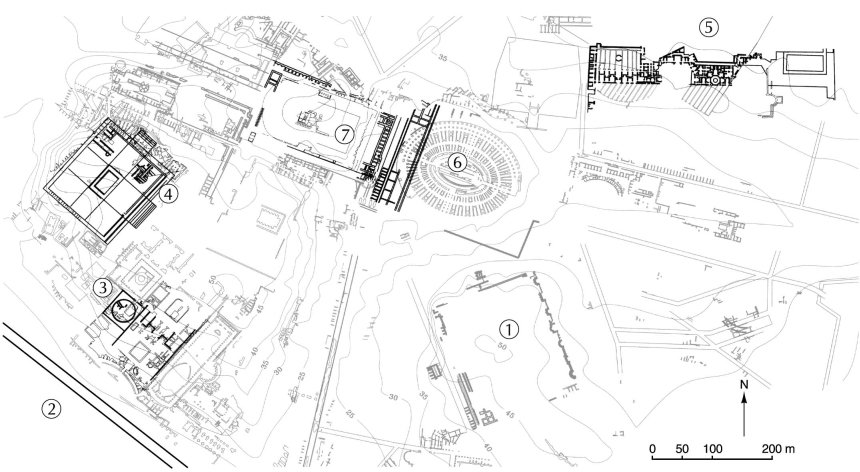
-
@elysium said:
Nice work Marco!
I was intrigued by your mention of the Cenatio Rotunda, is this the large circular structure under the domus flavia? do you have any pictures of how it would look? and where is the torre cartularia?
I agree those renders of the Domus Transitoria look great! Do they have the Domus Aurea also modeled?
The last thing that I read months ago was that it was not sure that the circular structure was the Cenatio Rotunda. You have a recent photo here:
I don't know if there is something new about this.
Edit: More information appears.
-
The map with numbers that Elysium posted is a map I drew some 20 years ago. Nice to see it's still circulating.
As for the cenatio rotunda, here go two photos I took, that are a bit clearer, but it's difficult to take it all in. The diameter is 16 meters, quite huge. In the reconstruction from Nero's show you'll see that the guys think of it as a self standing structure, tower like. For several reasons I don't agree. For one, to climb into a rotating tower you need a larger surrounding platform without obstacles, to avoid the guillotine effect between static and moving sections. So I believe that it would look something like this. Not sure it is the cenatio rotunda mentioned by Svetonius, but it's a good guess, the sight from there must have been breath taking. It's not clear how it could have worked, though. Sort of a merry go round in wood, but why the huge brick tower underneath? It looks like a bit of overkill ...
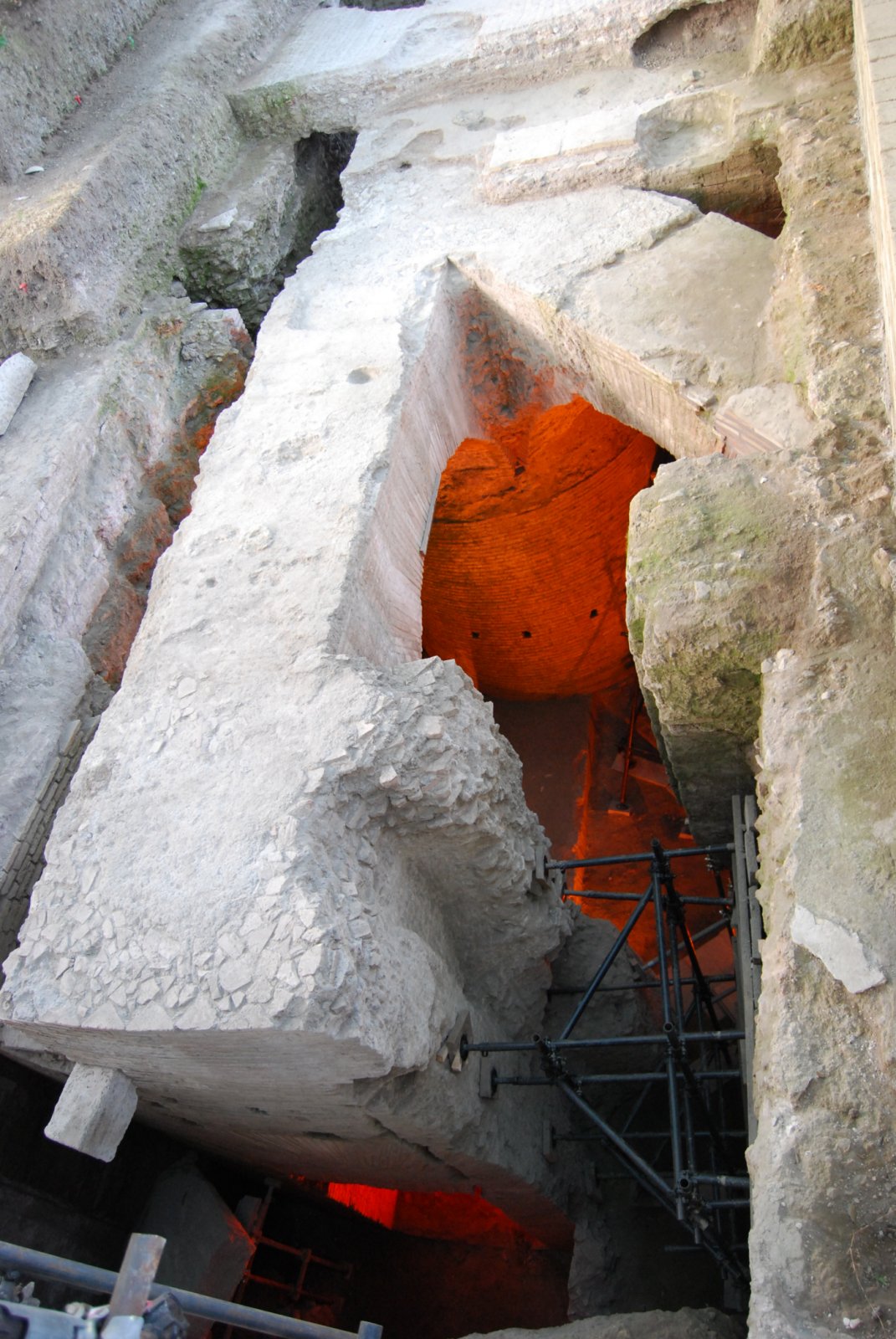
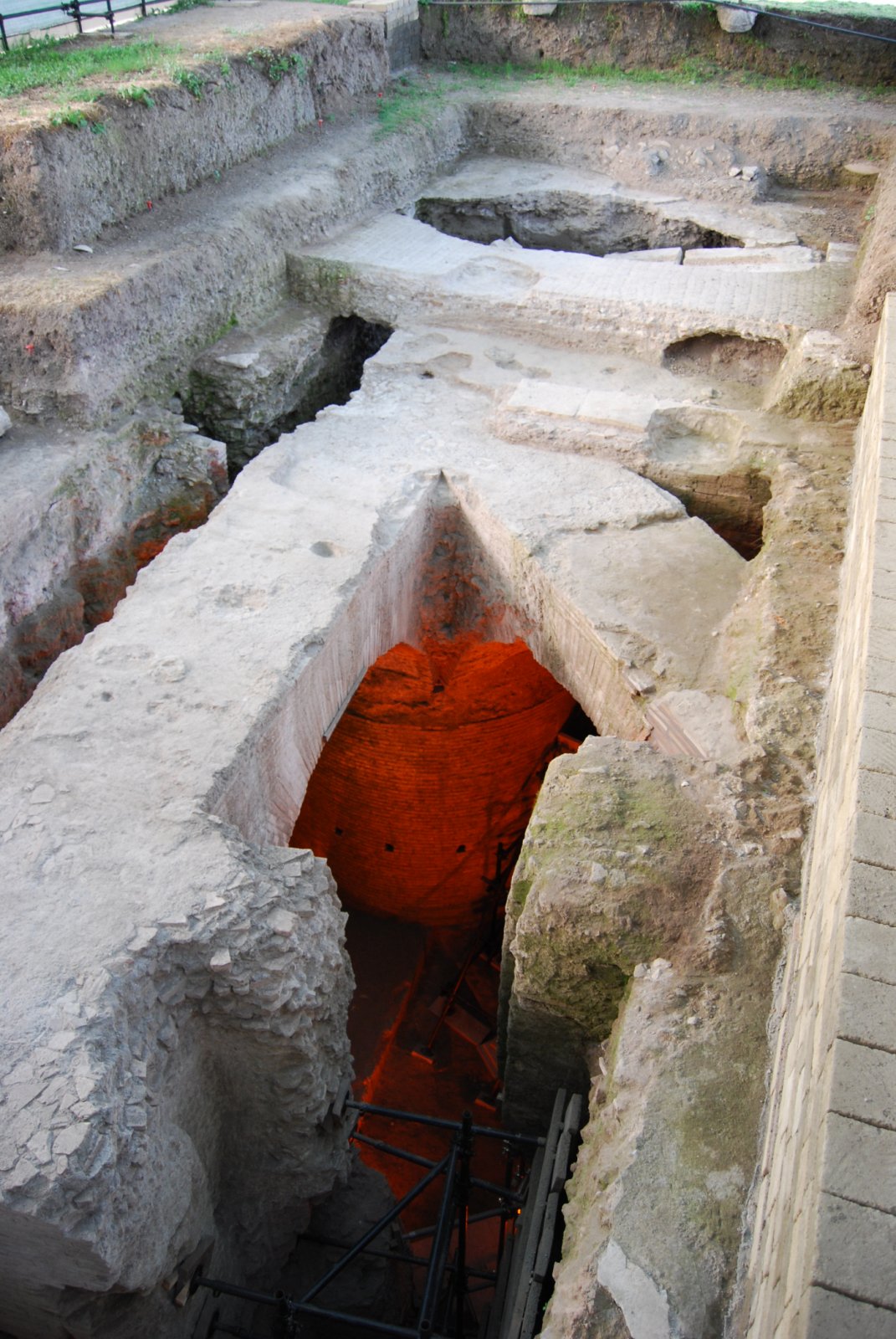
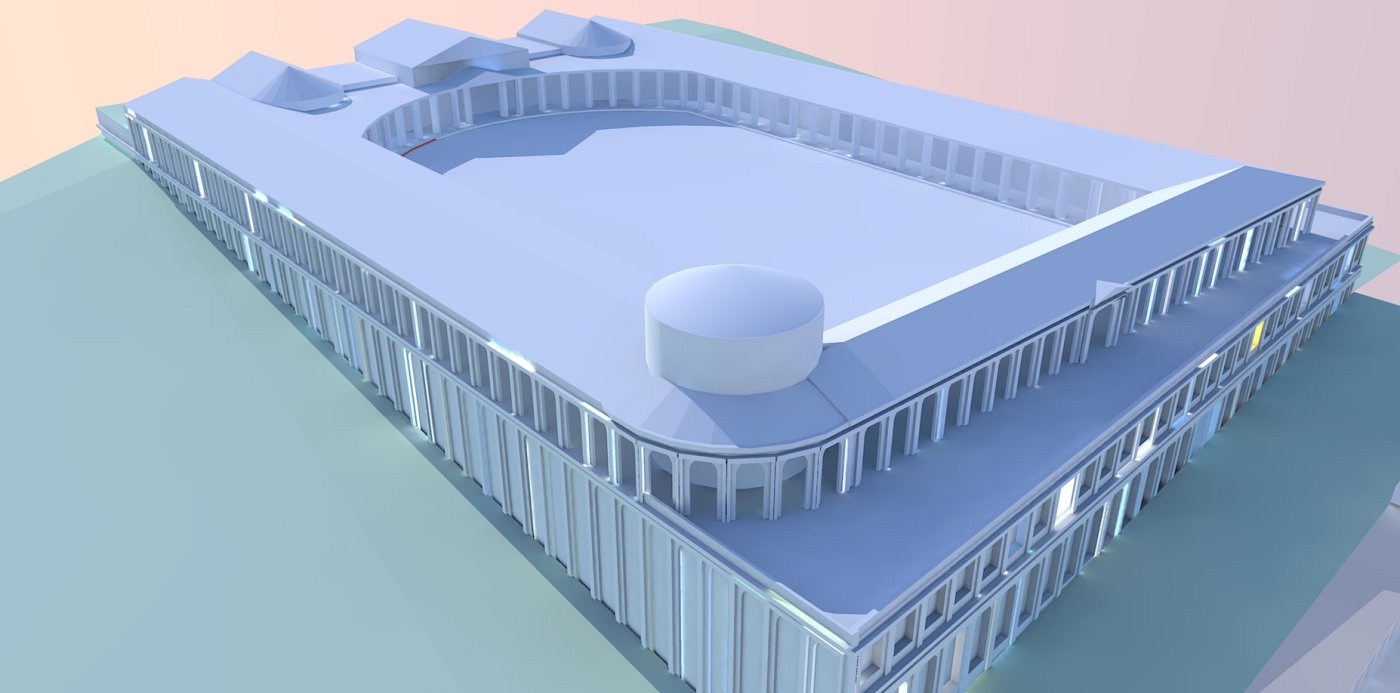
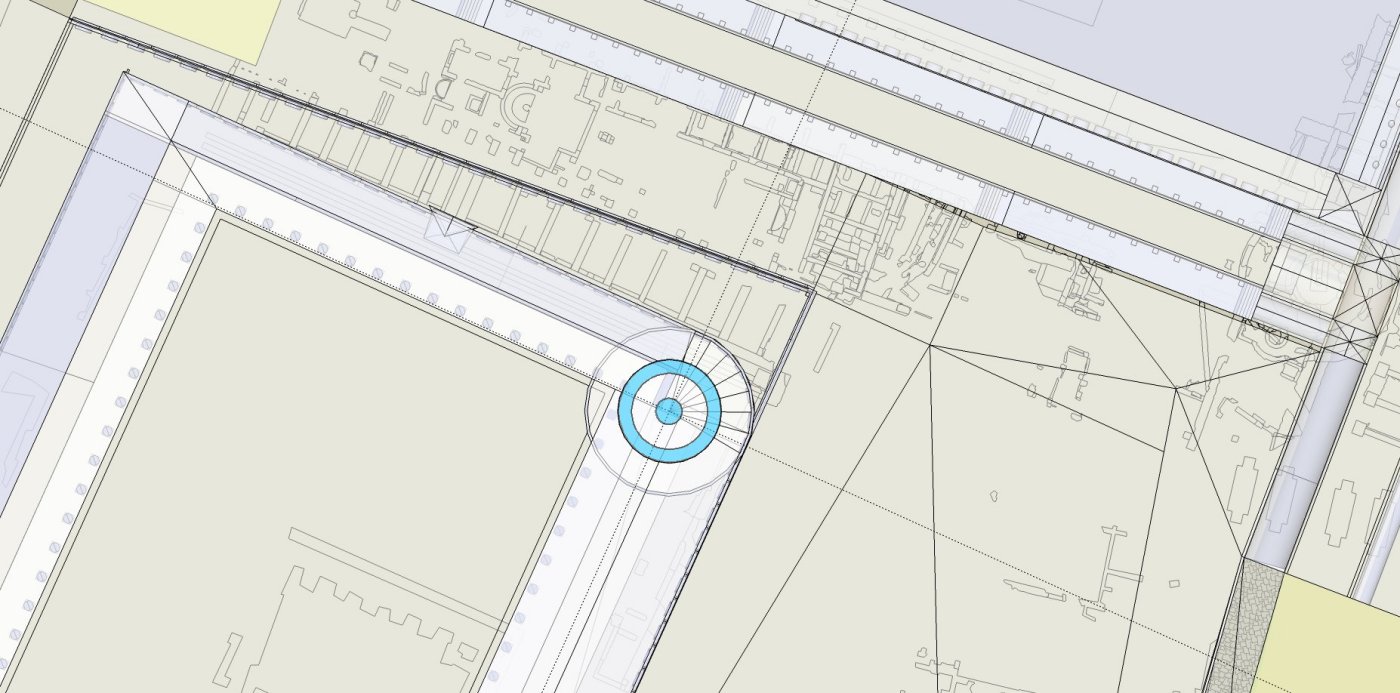
-
To complete the answers to Elysium, the red dot marks the site of the cenatio rotunda. The great circle marked by 3 in the map is quite flimsy, something like a circular wall to a garden or something like that.
The torre cartularia is an intriguing structure between the temple of Venus and Rome and the temple of Elagabalus. The remains are scarce, but impressive, a huge concrete cube, or prism, with two axes within a rectangular plan. It makes me think of an ascending ramp. Romans didn't have elevators, and their equivalent was a ramp that could be used with horses or stretchers. I was thinking of la Giralda in Seville, it's something like that. This is my first try, WIP ...
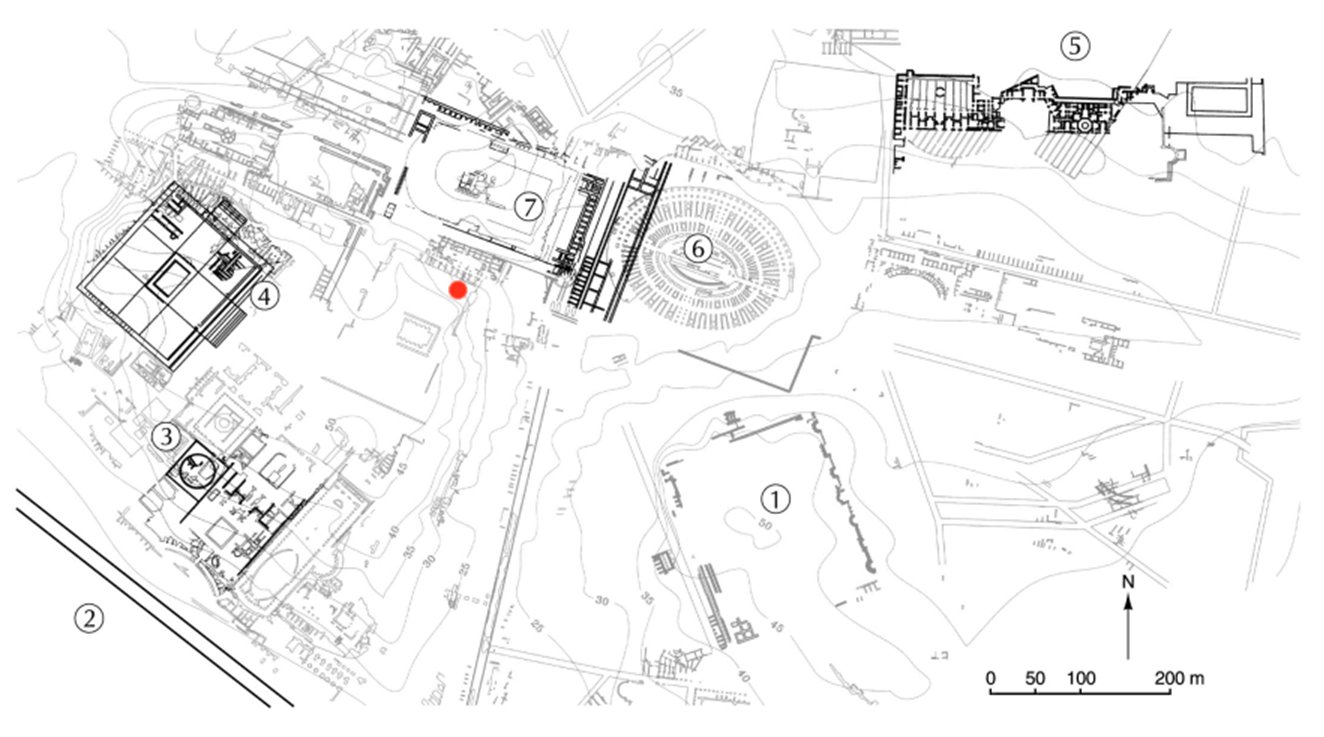
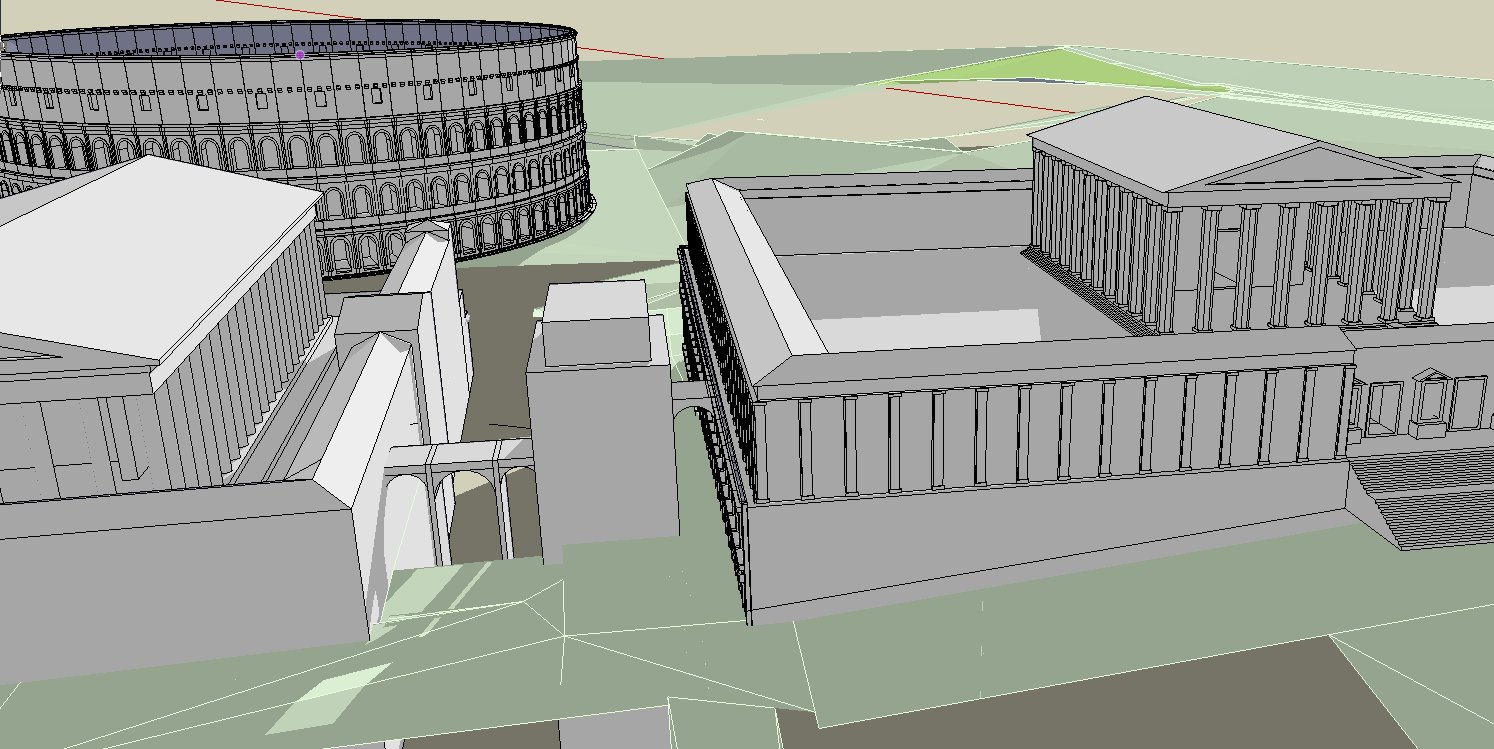
-
Great to know you are the author to that map, its one of my favorite pieces of information on the Domus Aurea!
I went back to see the area around the torre cartularia on google building maker (great aerial photography), i must say i never gave it much attention, i always followed the Gismondi version with a small temple, he must have considered the structure was the brick core.
But now that you mention it, it really looks strange, not at all like the sub structure to a temple. What is the date for its construction? Flavian?
Why did you thought of a ramp? the clivus palatinus is just around the corner why build a ramp there? it also reminds me of the structure built by Hadrian for the Colossus near the colosseum.
If you want an example o a similar roman structure, rather than the moorish Giralda tower, you might want to give a look to the roman lighthouse called Torre de Hercules in Galicia
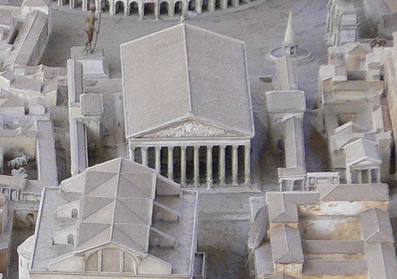
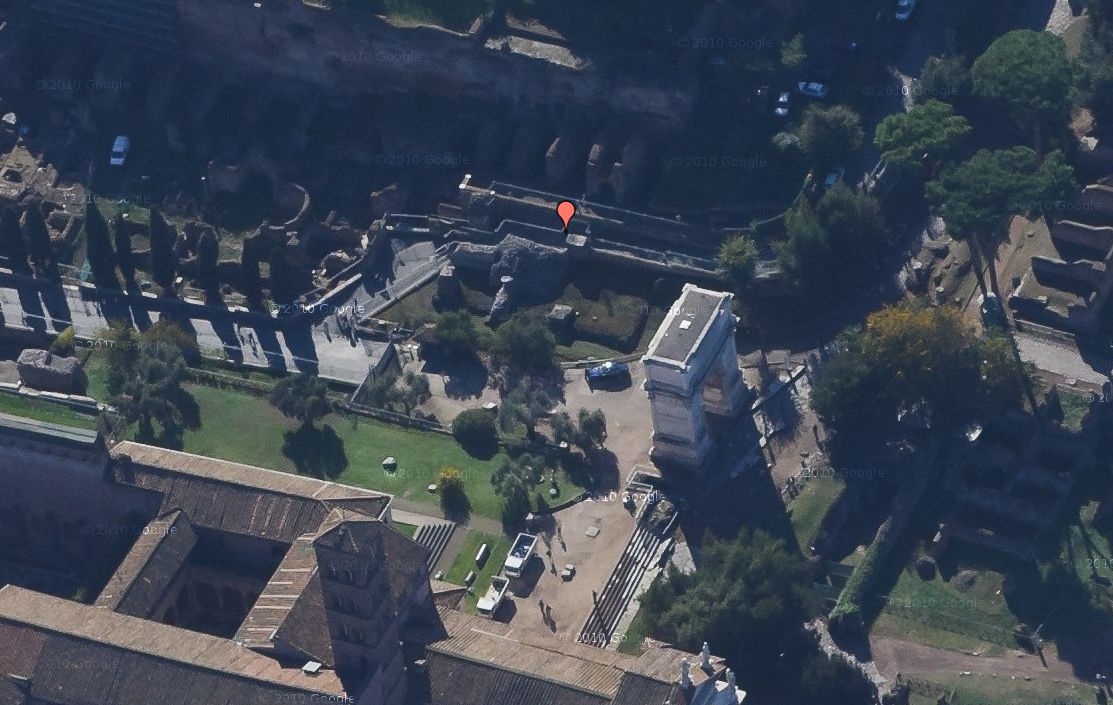

-
Thanks,Elysium. I didn't know that Herculean tower. But there is a strong continuity of craftsmen and typology between late roman and early moorish architecture, that image underscores the similarity with the Giralda.
For the rest, it's guesswork. With three points. First, I always thought that Nero and successors would design internal pathways to go from one part of the palace to the other. They built huge cryptoporticus to have the service traffic go its way without interfering with the emperor and friends, and then to go from the atrium to the cenatio the boss had to walk out into the clivus and go the round way mixing with heavy commoners traffic ... I don't think it makes sense.
Second, the name Torre Cartularia is medieval, in those times it was a tower (surely dating from roman times) and was used as a storage building for church rolls and records. A ramp would do fine, with shelves along the walls. The remains are dated, as far as I know, with Elagabalus, along with the termae at its base. But it could well be the reproposition of something much older.
Third, I think the remaining structure can be explained with a ramp, like in the scheme I enclose. Have a look at this other Google image, what else could those spokes be?
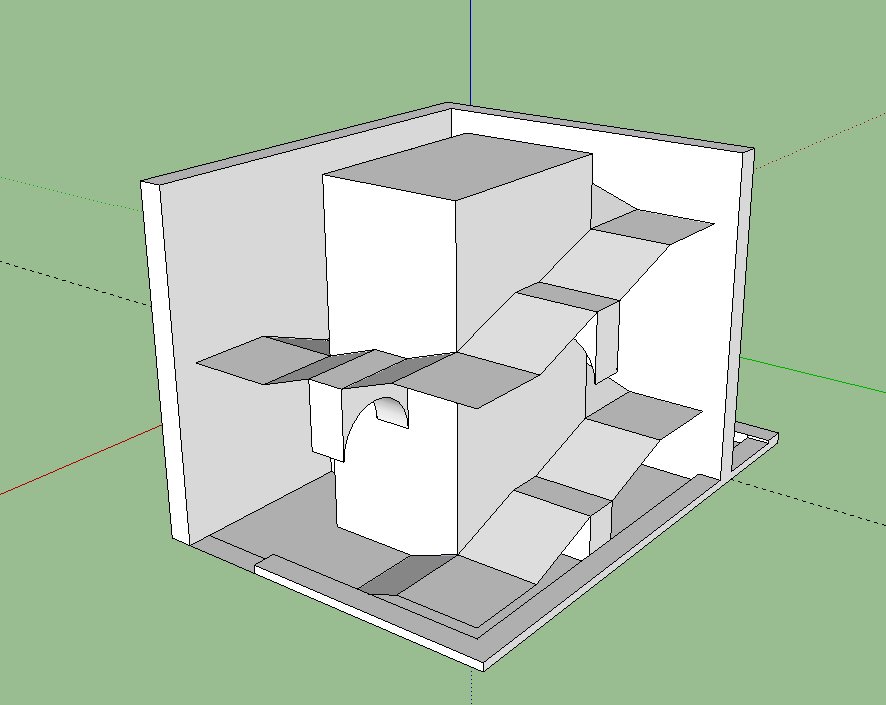
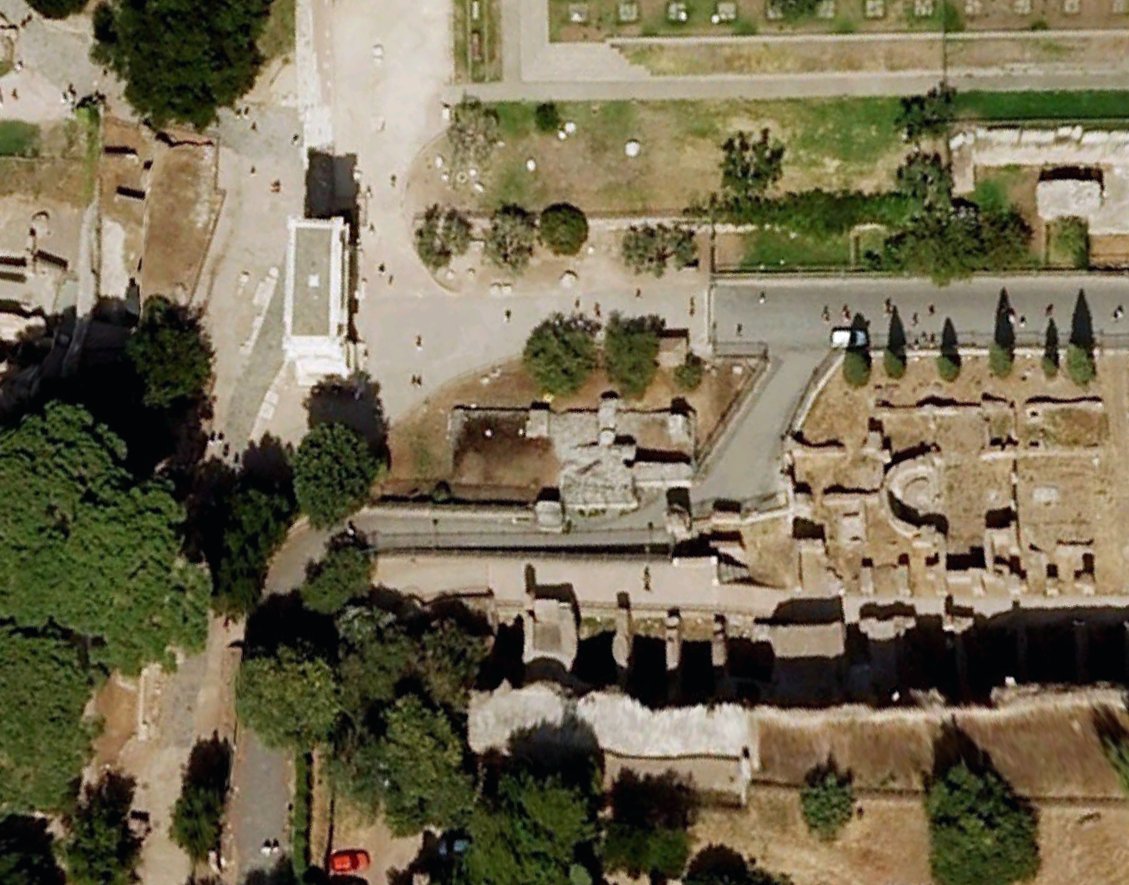
-
@Elysium: the small temple you see on Gismondi's model is actually there, but more North-West than the circular structure they "found" recently, west from the bath house. It is missing on the map above though.
I always thought that the circular structure would be some reminiscence of the famous tower in the gardens of Maecenas. I agree with Marco that it is a bit far fetched to have this huge brickwork structure just to support a dining room. There would have been easier places to build it.
For the circular feature below the Domus Flavia, I quite like the idea of Carandini who thinks it might have been an aviary. A circular building on an "island", with a bridge as an entrance. The same idea would be used in Hadrian's villa, in the "Teatro Maritimo". -
I just noticed you were talking about the rectangular foundation of the temple/ramp and not the so-called "coenatio rotunda"...
 sorry bout that...
sorry bout that... -
Never mind, Fluffy. It's messsy anyway.
This is a try at the tower/ramp. It looks quite odd, so near to the arc of Titus, but this is the plan of the excavations, it really looks as an annex to the temple base. Any suggestion welcome.
I'll have to work at the termae at the back of the tower next ...
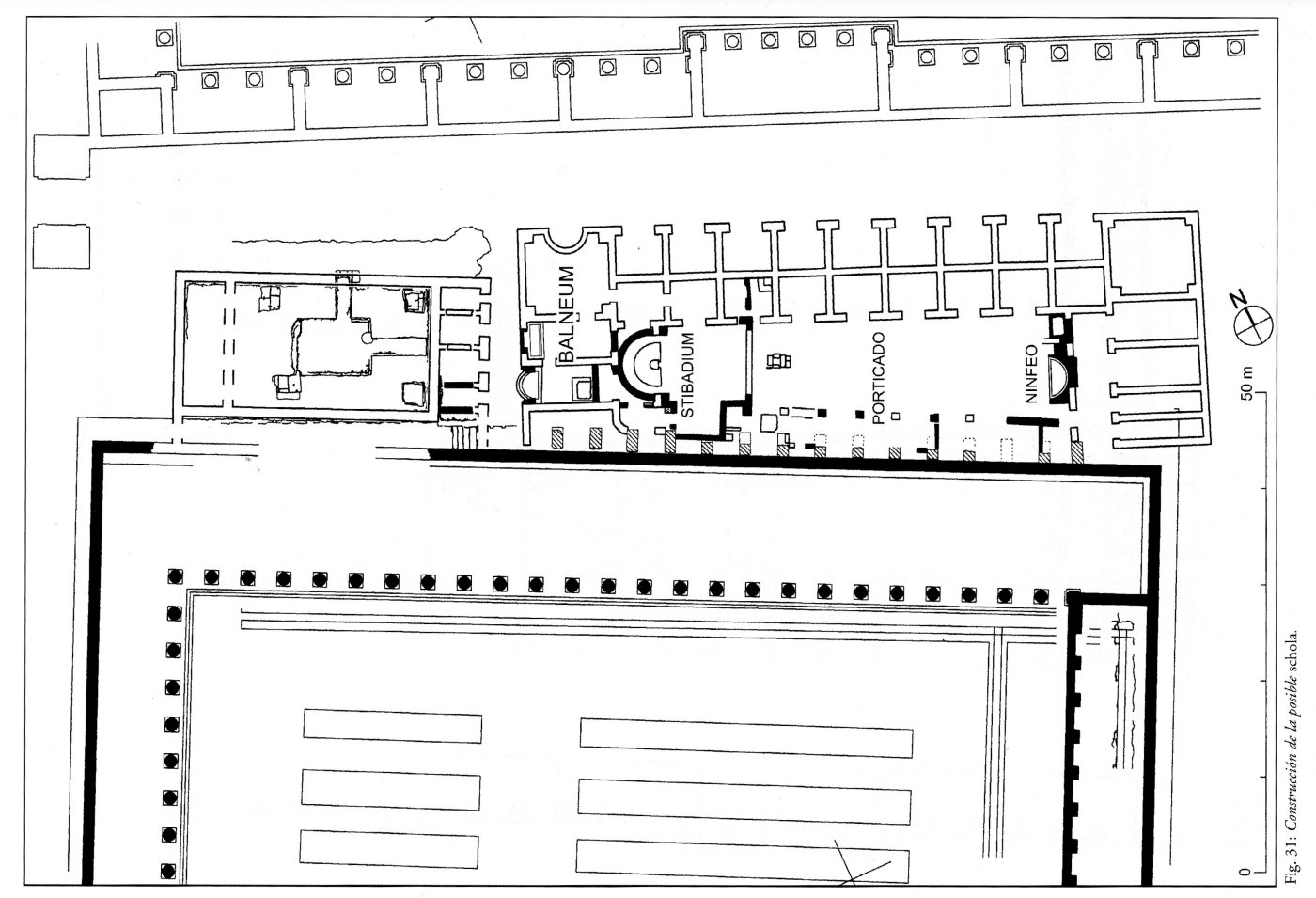
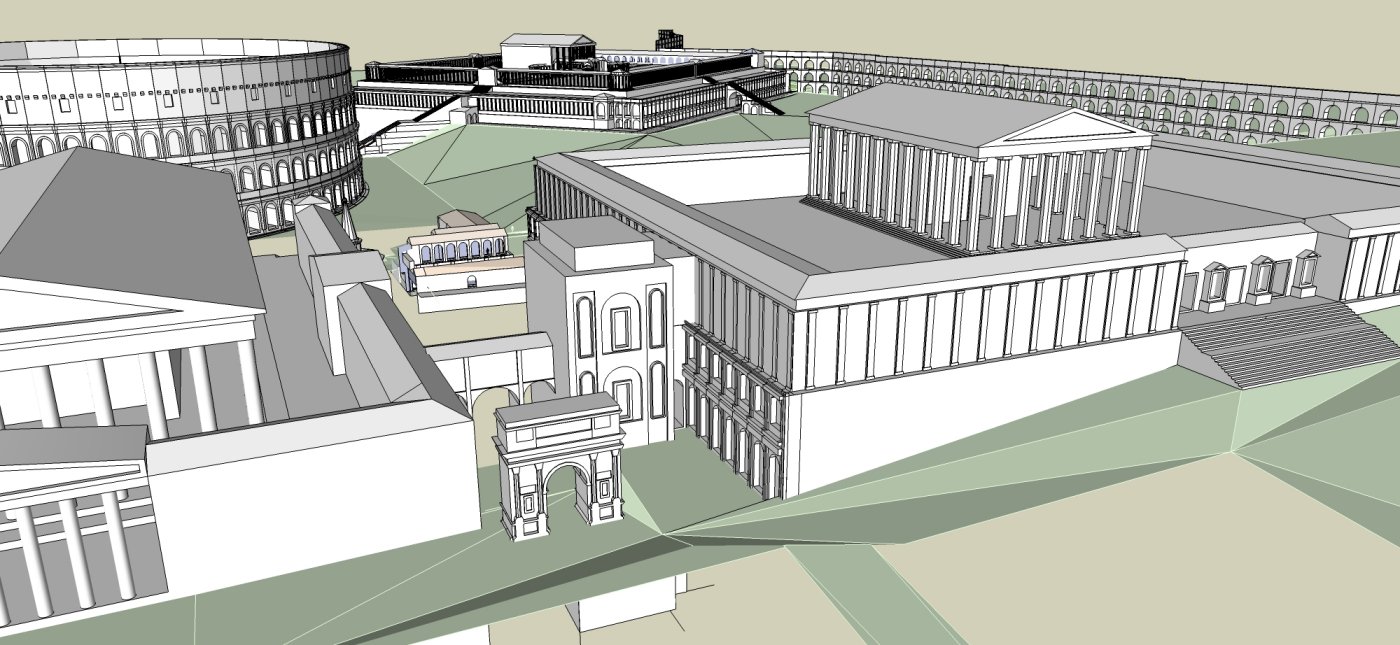
-
That's really cool, I never though of it as an annex to the Vigna Barberini site but it seems more than plausible...
I see you get your drawing from Ricardo Mar's book, I think it's time to re-read it (though my Catalan is not very good lol)
If you are doing a model of the Domus Transitoria, will you be including the house which is partly beneath the Temple of Venus and Roma? It is supposed to be the house of the Domitii, though I have no clue what they base that assumption on...
Advertisement







